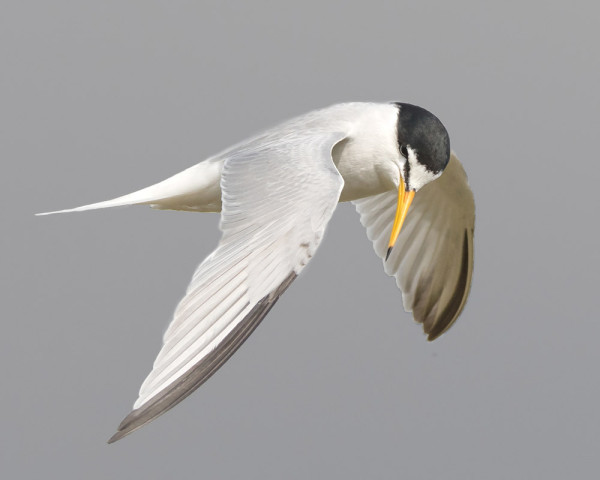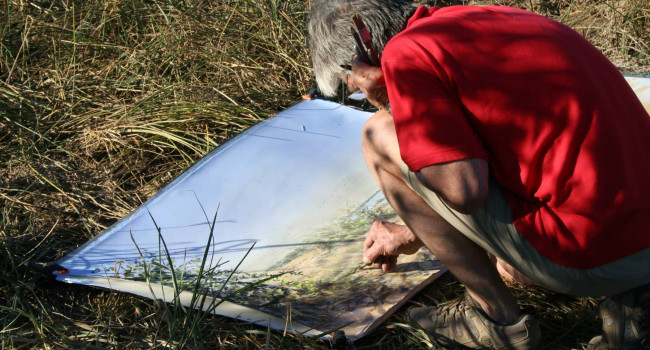
BirdTrack migration blog (28 April–4 May)
Scott’s role includes the day-to-day running of BirdTrack: updating the application, assisting county recorders by checking records and corresponding with observers.
Relates to projects
The start of this week was notable for the first real arrival of Garden Warblers, which typically arrive later than Blackcaps. Their songs are very similar and they can often be found in similar habitats, so care is needed to separate the species correctly. Over the next couple of weeks more will arrive, and those that are already here will continue to push northwards.
The first wave of Whinchats to arrive in spring are likely to be birds that will stay and breed in Britain and Ireland; those passing through in early to mid May will be birds that breed further north across Fennoscandia.
Other notable records during the week included the first wave of Whinchats this spring. These are most likely birds that will stay and breed in Britain and Ireland; those passing through in early to mid May will be birds that breed further north across Fennoscandia.
Ring Ouzels, Pied Flycatchers and Redstarts continued to arrive, even in the colder weather at the start of the week. The first flush of Wood Warblers was also noted, mainly from sites in the south-west and west of the country – not surprising given that these areas host many of the UK’s breeding sites for this species.
Looking further back, the end of last week did see a good inland passage of Little Gulls, particularly in the north-west, and the BirdTrack reporting rate certainly saw a spike as birders added this dainty gull to their BirdTrack complete lists.
Some sites reported record numbers: 67 birds at Woolston Eye Nature Reserve in Cheshire smashed the previous maximum day count of nine. A single flock of 86 on 21 April at Holme Pierrepont, Nottinghamshire was also notable, and a flock of 65 was counted at the nearby Netherfield Lagoons the same day. Other flocks of Little Gulls were reported along the Severn Estuary, which suggests those birds reported further inland had travelled up the estuary, and then inland and northwards.
To the delight of many landlocked birders, Bar-tailed Godwits were again widely reported from inland as well as coastal locations, as birds continue to head north through the country to their breeding areas in Siberia.
Rarities seen during the week were few and far between but those that did occur were of the highest calibre. The pick of the bunch has to be the Elegant Tern briefly seen in Dorset, which would certainly be a popular bird if it was seen again.
Also in Dorest was a first-winter Forster’s Tern, which proved a big draw. And a White-crowned Sparrow of the gambelli race was only the third of this subspecies to occur in Britain; although elusive at times, it drew a steady crowd of admirers over the course of the week.
Looking ahead
Coastal locations will undoubtedly be the best place to look for migrants as they arrive, but if the weather is clear enough, inland birds will continue to push up through the country.
The week ahead looks, at the moment, as if it will follow a similar pattern to the past week, with perhaps some slightly warmer temperatures.
The weekend will see south-westerly winds spreading across the north of the country, bringing a welcome rise in temperatures but also scattered rain. These conditions could see a good arrival of migrants that have been held up over the last few days by the colder north winds. As always, coastal locations will undoubtedly be the best place to look for migrants as they arrive, but if the weather is clear enough, inland birds will continue to push up through the country.

Sandwich Terns return relatively early, but the next couple of weeks are good for their relatives: look out for Common, Arctic, and Little Terns.
Little Terns tend to hug the coast, but both Common and Arctic Terns can be found inland, sometimes in good-sized flocks as rain forces birds to pause their migration and group together at lakes and reservoirs. These flocks are well worth searching for something rarer, as they could hide a Black Tern or Little Gull, both of which like to hawk for insects over waterbodies.
From late April, the number and variety of waders moving through the UK typically increase. Species such as Whimbrel and Bar-tailed Godwit are still passing through, but they are joined by Common Sandpiper, Spotted Redshank, Greenshank, Ringed Plover, and Little Ringed Plover.
The first Wood Sandpipers will also be arriving. Look out for these at both coastal and inland locations in their preferred habitat of reed-edged pools with shallow water. And don’t forget to scan flocks of Lapwing and Golden Plover for Dotterel; although this species is a bird of the uplands, during migration they often occur in the lowlands in areas of short-cropped grass and ploughed fields.

The sounds of spring migration
Turtle Dove
Spotted Crake
The next week should see the arrival of some rare breeding birds in the UK. Extra care must be taken to avoid disturbing the following species, and always think about how you share the information if you are lucky enough to find one.
After some early records this year, Cuckoos will continue to arrive, easily identifiable by their distinctive silhouette and “cuck-oo” song.
Turtle Dove has a drawn-out arrival period with birds arriving from mid April to mid or late May. The favourable winds forecast in the coming week should see a wave of birds arriving. Scrubby habitat is a good place to look for them; listen out for their distinctive purring song.
As the evenings get warmer, it’s also a good time to listen out for Spotted Crakes. This species is a scarce breeder in the UK and can be found in marshy areas with a mixture of reed or sedge. Birds are very secretive so the best way of locating them is by their song, which is said to sound like a dripping tap.
Rare breeding raptors to look out for in the coming week include Honey-buzzard and Montagu’s Harrier, both of which arrive later in the spring.
Which spring migrants have you seen? Are you still looking out for a particular species? Let us know in the comments below!
Send us your records with BirdTrack
Submitting your sightings to BirdTrack is quick and easy, and gives us up-to-date information about our migrating birds.
Don’t forget you can also add birds identified by call and song!
Find out more









Share this page